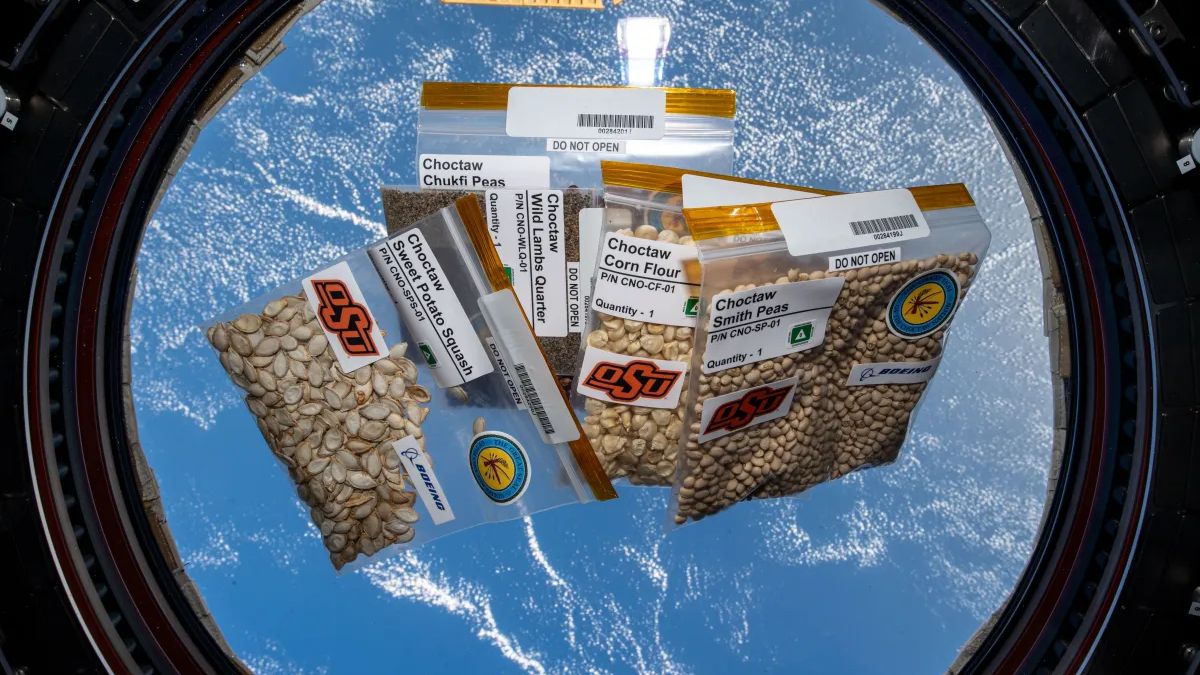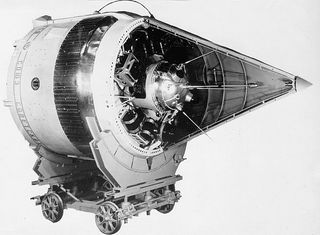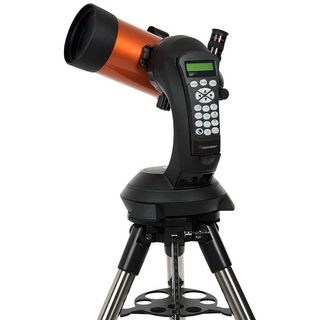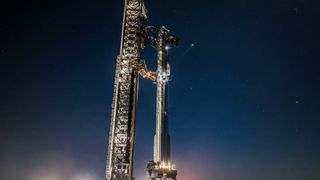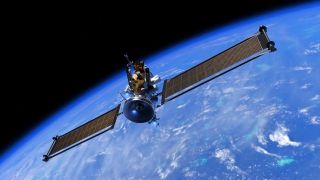Seeds flown to space last year will be planted on Earth this spring as part of a cultural and STEM (science, technology, engineering and math) study. Five varieties of heirloom seeds from the Choctaw Nation of Oklahoma — including Isito (Choctaw Sweet Potato Squash), Tobi (Smith Peas), Tanchi Tohbi (Flour Corn), Tvnishi (Lambsquarter), and Chukfi Peas — were flown to the International Space Station (ISS) in November 2023. The seeds, which together weighed just over a pound (500 grams), were exposed to microgravity and space radiation for more than five…
Read MoreCategory: Solar System
Our solar system
‘Lunik Heist:’ A real-life CIA rocket kidnapping goes to Hollywood
Now in the works is a retro look back in time at a bizarre Cold War caper by the Central Intelligence Agency (CIA) thanks to a forthcoming, star-studded comedy/drama movie called “Lunik Heist.” Earlier this month, Searchlight Pictures, a Disney-owned division, announced that actors Jared Leto, Lupita Nyong’o, and John Mulaney have signed on to star in “Lunik Heist,” described as a “a wild, roller-coaster ride, filled with subterfuge and unlikely heroes.” The film is based on a real-life incident that saw CIA operatives plot to disassemble and inspect one…
Read MoreLast supermoon of 2024 wows skywatchers around the world with Full Beaver Moon (photos)
The final supermoon of 2024, the Beaver Moon of November, thrilled skywatchers around the world as it ushered in the weekend with a stunning night sky sight. November’s full moon rose on Friday (Nov. 15) while the moon was slightly closer to Earth in its orbit, making it what’s known as a supermoon. These full moons can appear slightly larger in the night sky due to the moon’s proximity to Earth during the full phase. November’s Beaver Moon was the last of four consecutive supermoons this year, a series that…
Read MoreUSC students set world record with high-flying rocket launch (video)
The University of Southern California’s student rocketeers have done it again. The USC Rocket Propulsion Lab (USCRPL) — which in 2019 became the first student organization ever to launch a rocket to space — sent its Aftershock II vehicle 470,400 feet (89.09 miles, or 143.38 kilometers) above Earth last month. That smashed the amateur altitude record of 380,000 feet (71.97 miles, or 115.82 km), which was set in 2004 by the Civilian Space Exploration Team. “This achievement represents several engineering firsts,” Ryan Kraemer, the executive engineer of USCRPL and an…
Read MoreSpaceX stacks Flight 6 Starship megarocket ahead of Nov. 19 launch (photos)
SpaceX’s Starship megarocket has come together ahead of its sixth-ever test flight next week. SpaceX has stacked Starship‘s two elements — the Super Heavy booster and Ship upper-stage spacecraft — on the orbital launch mount at its Starbase site in South Texas. The company confirmed the milestone in a Friday night X post, which featured four photos of the stacking process and its aftermath. A fully stacked Starship stands nearly 400 feet (122 meters) tall. (Image credit: SpaceX via X) That post also announced a date change for the flight:…
Read MoreWhat time is SpaceX’s Starship Flight 6 launch test on Nov. 19?
SpaceX is gearing up to launch its next Starship test flight, a mission that will attempt a second catch of the world’s largest rocket on Tuesday (Nov. 19). But if you’re hoping to watch the launch live online, you’ll need to know when to tune in. Currently, SpaceX’s Starship Flight 6 test flight is scheduled to launch no earlier than Tuesday, Nov. 19, at 5 p.m. EST (2100 GMT) from the company’s Starbase site in South Texas, near Boca Chica Beach. This will be SpaceX’s sixth test flight of a…
Read MoreWatch November full moon rise today in free livestream
The Beaver Supermoon 2024: online observation (15 Nov. 2024) – YouTube Watch On The November Full Moon, also known as the Beaver Moon rises today and is the last supermoon of the year. You can watch the full moon rise live from Italy, in a free livestream courtesy of astronomer Gianluca Masi of the Virtual Telescope Project. The November full moon livestream starts at 1:30 p.m. EST (1830 GMT) and you can watch it live here on Space.com or directly on the Virtual Telescope Project’s WebTV or YouTube channel, weather…
Read MoreAurora activity is just getting started. Here’s why the best northern lights are yet to come.
There’s no doubt we’ve been treated to some remarkable aurora shows this year (the May superstorms and the recent strong activity in October spring to mind) but what if I told you this was only the beginning of some incredible northern lights activity? In October 2024, scientists announced that the sun has reached solar maximum, a period of heightened solar activity and sunspot frequency that occurs during the sun‘s approximately 11-year solar cycle. During the solar maximum period, the sun emits more energized particles as it erupts with coronal mass…
Read MoreDid NASA’s Viking landers accidentally kill life on Mars? Why one scientist thinks so
In 1975, NASA’s Viking 1 spacecraft entered orbit around Mars, carrying a mission to unlock the secrets of the Red Planet. Soon, it released twin landers that drifted toward the Martian surface and eventually made history as the first American spacecraft to touch down on the world. For over six years, Viking 1 continued to orbit Mars’ Chryse Planitia region while its landers collected soil samples using robotic arms and onboard laboratories, marking a groundbreaking chapter in humanity’s exploration of the Martian environment. At the time, however, little was known…
Read MoreBlue Origin stacks huge New Glenn rocket ahead of 1st launch (photo)
Blue Origin’s massive new rocket is getting closer to being ready to fly. The company shared a new photo of the two stages of its New Glenn rocket being joined together for the first time in the company’s facility near NASA’s Kennedy Space Center (KSC) in Florida. “GS-1 meets GS-2,” the company wrote on X (formerly Twitter) in a post accompanying the photo, in reference to the first (GS-1) and second (GS-2) stages of the new rocket. New Glenn is expected to make its maiden flight sometime in November, taking…
Read More